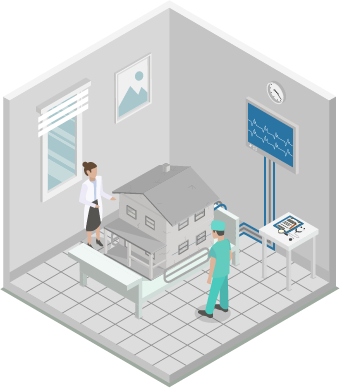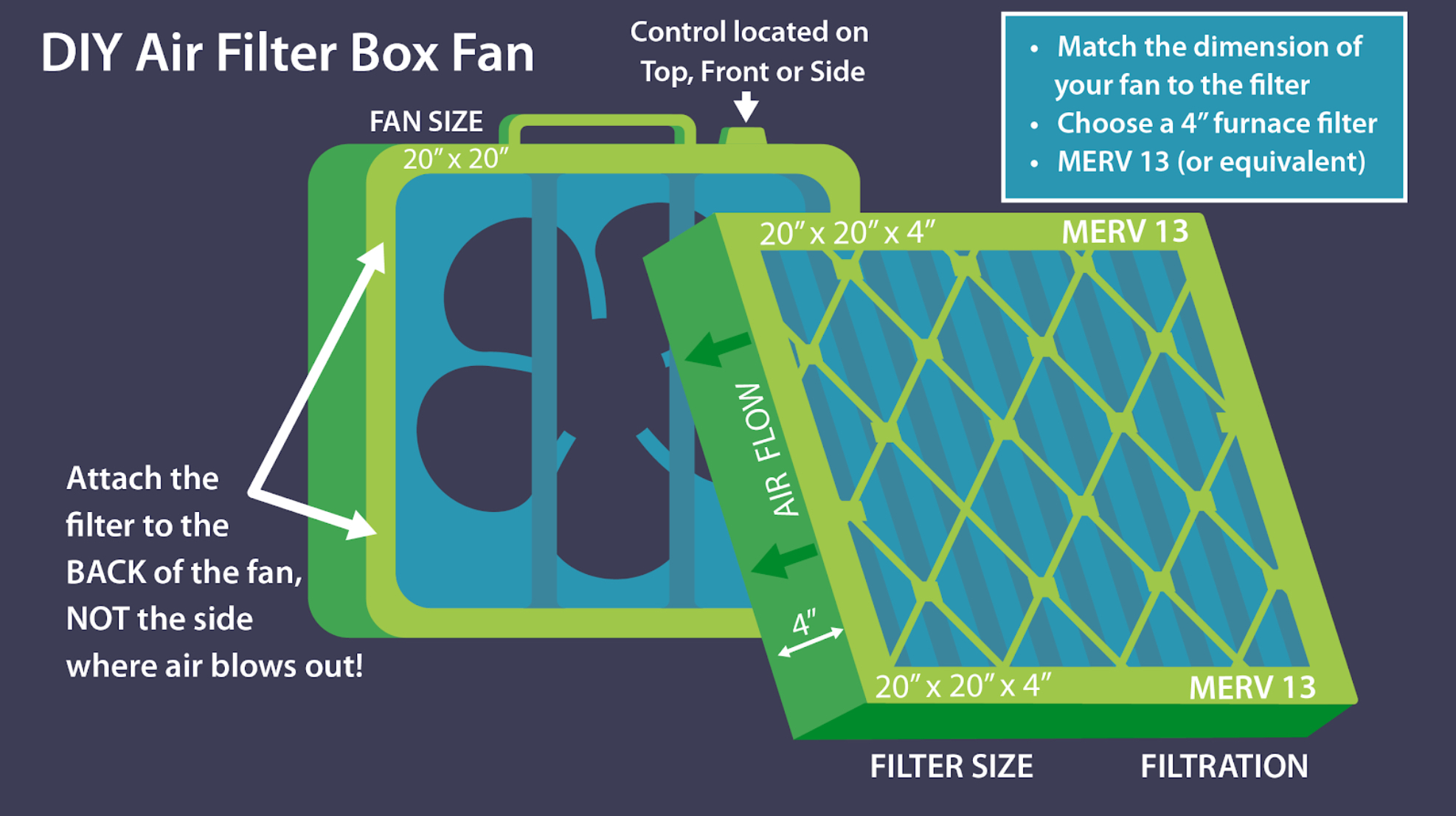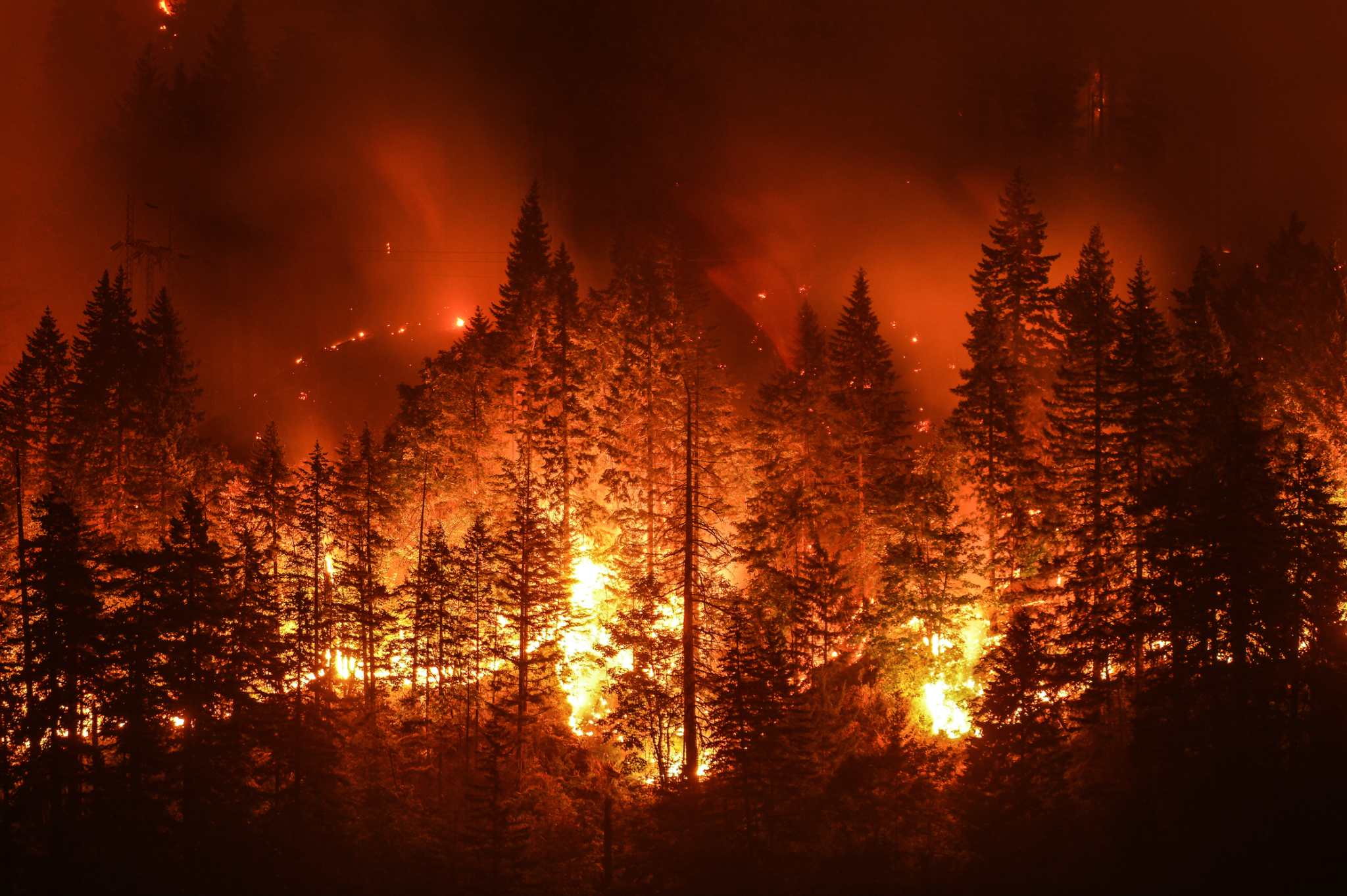Ask an Expert is an occasional feature where we pose a question submitted by readers to our Healthy Home Director Carl Grimes and Healthy Building Scientist Joe Medosch.
Reader Question: My air ducts are about to be cleaned. What should I expect from the process?
The Importance of Duct Cleaning
Duct cleaning is an important part of removing dust and debris from the forced air distribution ducting in homes. The routine maintenance for duct cleaning can vary from 3-4 years to as long as 10-15 years.* While the principles of duct cleaning are relatively simple, there is some important, general information that needs to be understood so that you don’t inadvertently replace one issue with another and can confidently monitor the work performed to ensure that the job is done effectively and successfully.
In general, if performed properly using correct techniques and equipment, duct cleaning should not impact the health of occupants or make a mess of your home either during or after the work is completed. The vacuum source should be configured to create airflow from inside the house to the vents, then through the ducting to the vacuum hose at the blower to ensure dust and debris is kept out of the living spaces and occupants.
Duct Cleaning Standards
Unlike many other procedures in homes, especially regarding mold, there are two excellent industry standards for duct cleaning. One is from the National Air Duct Cleaners Association and the other is from the Air Conditioning Contractors Association.** Professionals performing duct cleaning should comply with at least one of these standards.
Duct Cleaning Services: Inspection Comes First
The contractor needs to inspect the entire system, identifying where the main blower is, where all the supply vents are located, and where all the return vents are located. Most ducting cleaning companies now have fiber optic cameras to inspect the interior of the entire system of forced air ducting. This inspection prior to cleaning can help determine:
- The type of ducting for the correct selection of equipment
- If the ducting has smooth metal surfaces
- If the interior of the ducting is lined with insulation
- If the ducting is made of compressed fiberglass
- Duct gaps or separation and other areas of visible duct leakage
- Areas of visible mold growth, water damage, or previous dampness
- Locations of physical damage and areas of excess dirt or debris
- If cleaning is even necessary
Requirements for Successful Duct Cleaning
While the specifics will vary somewhat from home to home, the basic requirements for successful duct cleaning are the same:
- Physical debris removal is fundamental. Dust, dirt, and debris must be physically removed. Expect a professional to use brushes, high-pressure air nozzles, and other methods to physically disturb and dislodge the debris and “dust” laying on the bottom of the ducting and adhering to the other surfaces of the ducting. Equipment needs to reach into the long horizontal trunk lines where most of the “dirt” is located, plus the branches – not just what is visible when the vent grill is removed.
- Airflow must be managed. This management of the airflow is what removes the debris without contaminating the house. Strong air flow is required; expect a professional to use a large “vacuum-type” device or a truck mounted vacuum. The vacuum source uses a large hose to suck the air out of the air handler (furnace). This forces the air inside the house into the vents, down the ducting, into the air handler, and out the house through the hose to the vacuum source.
- Types of Vacuum equipment. Duct cleaners will either use truck mounted, semi-portable (located outside the house), or small portable vacuums (usually located inside the house).
- Truck mount and semi-portable vacuum units will be outside the house, as will their exhaust air. The equipment should be far enough away from the house that the exhausted dust and debris is not circulated back into the house. This will also prevent the truck exhaust from entering the house.
- Small portable vacuums must have a HEPA filtered exhaust. The HEPA filter should be new, the equipment exhaust should not have any odor, and the exterior should be clean and free of visible dust. It is important to know that the HEPA filters in small portable vacuums will not stop ALL particles, meaning some ultra-fine particles will blow back into the room and heavy debris can cause the air to blow past the filter and back into the house. If you see debris or dust coming from the unit, demand that the technician immediately stop and begin removing the dust that escaped into the house and onto surfaces.
- No chemicals (fogging, spraying, wiping, gases) should be used in the duct system. Neither the NADCA or the ACCA standard advocates the use of chemicals, including those that are labeled as “organic” or “natural,’ for any reason including cleaning, mold removal or mold killing, sanitizing, or deodorizing. Chemicals are NOT a substitute for physical removal.
- Vent covers should be physically removed and cleaned. Both standards require that all vent covers be removed and cleaned. Warm water and a mild, non-fragranced detergent is sufficient.
- Dust and dirt streaks around the edges of the vents need to be cleaned. This is caused when air “leaks” out of the edges of vents onto the surrounding walls, which will be visible when the register is removed. The loose dust on a wall – which is typically not mold – can usually be vacuumed or wiped off, but staining sometimes remains. To prevent future leakage, have the contractor seal any gaps between the drywall and the duct.
- Air conditioning cooling coils may need to be cleaned. The fiber optic inspection will reveal whether cleaning is necessary, or if a direct assessment is needed. Cleaning the cooling coils is an extensive process with a risk of damaging the fins of the coils. In order to wet clean the coils properly, they need to be exposed. This requires the removal of the plenum (above the top of the air handler) or gaining access from the side. If the coils need to be removed for extensive cleaning or for replacement, an EPA Certified Technician is required to prevent the escape of the AC coolant gas into the air.
- The blower fan, housing, and cabinet surfaces should be cleaned. They are part of the air distribution system of ducting with impacted dust on the blower fan blades. The blower assembly needs to be removed from the cabinet for sufficient access to be sufficiently cleaned. This allows unobstructed access to the cabinet surfaces for cleaning.
- Replace the furnace filter. The furnace filter should be removed and replaced with a clean standard MERV 11 or 13 filter (or equivalent).
- Expect the process to take a few hours at a minimum. For a basic HVAC configuration, duct cleaning should take 2-3 hours with 2-3 technicians. It can take longer if they wet clean the air conditioner coils, or if the ductwork is in the crawlspace, basement or attic. , Larger properties, complex ductwork, or multiple HVAC units, for example, can take 5+ hours with a team of 2-3 technicians.
Specific Issues with Mold in Ducts
If you know or suspect that there is mold in your ducts, there are a few specific and important things to consider.
Mold and bacterial growth are most likely to grow on the air conditioning (AC) coils and the drain pan below it, as this is where the moisture condenses and can remain long enough for mold growth. Both the NADCA and ACCA standards address requirements for physical removal of mold growth from these areas.***
Mold can also grow on the ducting itself and some types of ducting are more susceptible because of how they accumulate dust and moisture. They type of ducting you have will inform whether it can be cleaned or if should be removed and replaced.
- Metal ducting: (low risk of growth and easy cleaning) Mold growth in metal ducting is nearly impossible unless water leaks directly into dust and debris inside the ducting. Metal is a smooth non-porous surface which can be cleaned by the routine physical disturbance and sufficient air flow to the vacuum source per the Standards.
- Flex ducting: (low risk of growth, with difficult cleaning) Mold growth isn’t likely, because flex ducting has smooth non-porous surfaces. However, the complex spiral shape has “low spots” on the bottom where dust and water can accumulate resulting in conditions for mold growth. The configuration also makes it difficult to fully clean. Flex duct is also more fragile than metal ducting. Different cleaning equipment and modified modified cleaning techniques are necessary to prevent physical damage. It is often less expensive to simply replace flex duct than it is to clean and then replace because of damage.
- Insulated ducting (high risk for growth, needs replacement instead of cleaning or disinfecting) When fiberglass insulation is used to line the inside of the ducting or the ducting is made out of compressed fiberglass (duct board) it cannot be sufficiently cleaned or disinfected if previously wet, has visible mold growth, or has an odor. Both standards require removal. The reason is because fiberglass is porous and the surface is not smooth. It captures and holds dust on all surfaces, not just along the bottom. Because the dusty mat of fiberglass will also hold liquid moisture along with the dust, it is has a high risk of visible mold growth.
Finally, treating mold with chemicals, gases, fog, deodorizers, is NOT a substitute for physical removal. Physical removal can be done either by cleaning smooth non-porous surfaces, or removing rough or porous surfaces.
Any chemical with claims of killing or controlling mold or bacteria is required by Federal law to have an EPA Registration Number and Label per the Federal Insecticide, Fungicide, Rodenticide Act (FIFRA). The official label will specify if the product can be used in forced air ducting and how it can or cannot be applied. Some products can be wiped but not sprayed or fogged, for example.
Refuse to use if the Registration Number and label cannot be produced. Receive written agreement that they will apply per the label’s instructions. If you are chemically intolerant or have other concerns of safety, refuse their use. If for some reason these products are used, they must be applied after cleaning per FIFRA and standard disinfection practices. They are not to be used instead of physical removal.
The same precautions apply to products promoted as “natural,” organic, or otherwise “safe.” Both the active ingredients and inert ingredients may be problematic for you. Personally test all chemical products before authorizing use.
Maintaining your Ducts
Once your ducts are cleaned, make sure to keep them well-maintained by:
- Having your heating and cooling units services annually to prevent significant issues from developing
- Installing a MERV 11-13 filter or equivalent and replacing it at least during the heating and cooling seasons.
- If the filter slot is at the air handler (furnace) make sure the filter slot is sealed. Installation of a MERV 11-13 filter (or equivalent) can reduce the need for cleaning.
- Having your ducts tested and sealed can be beneficial for indoor air quality and energy reduction. Duct leakage is what causes debris to get into your return ducts and allows a direct path of bringing dust, and contaminants into the air you breathe. The most important location to seal is at the air handler (furnace) and removing the registers and sealing the drywall to the metal ducts. Your home may have ducts that are actually floor framing with a piece of sheet metal on the bottom of the framing that creates a cavity. Because they are the house framing, they are directly connected to other framing areas. We recommend these panned ducts be sealed wherever possible, even if just along the bottoms of the framing at the metal sheets.
Determining duct leakage requires testing with a “duct tester,” a fan that measures the leakage in CFM (cubic feet per min). The ducts should only be sealed with mastic, a putty for ducts, mastic tape or high-temperature foil tape. Duct tape is not permitted for heating or cooling ducts, it dries out and will fail. Once sealed it should be tested to confirm tightness. If you have a gas furnace or hot water tank in the house or garage the contractor should perform a combustion safety test to confirm the units are not back drafting.
Your individual situation may be different. If you have specific questions, please contact us through our Ask an Expert page and we’ll get back to you!
*How often ducts need to be cleaned depends on multiple factors including: outdoor pollutants, leakiness of the house, occupancy (people and pets), and type of air filters.
**National Air Duct Cleaners Association duct cleaning standard has been internationally accepted, used, and generally validated for over 20 years. Air Conditioning Contractors Association> has an ANSI Accredited Standard. ANSI is as close to a regulation as exists while still being voluntary.
***Note: As mentioned previously, if the coils need to be removed for cleaning or replacement, an EPA Certified Technician is required to perform the operation to prevent the escape of the AC coolant into the air.
Hayward Score helps you discover how your home may be impacting your health in minutes – – for FREE!
Answer a quick set of questions then get a personalized list of action items. Transform your home and health today!

ARE YOU CONCERNED YOUR HOME IS MAKING YOU SICK?
Our guide on indoor quality will help you diagnose possible issues and implement intelligent solutions to improve the quality of the air inside your home.















